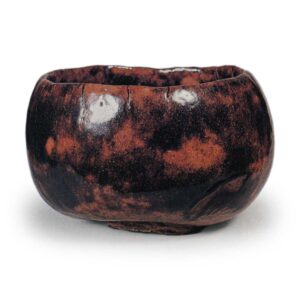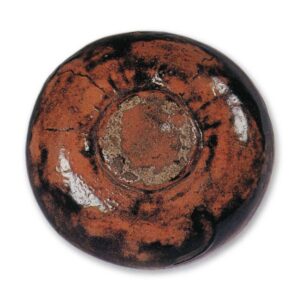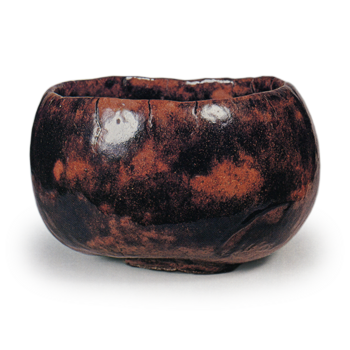

Height 9.0cm, mouth diameter 11.7-12.2cm, base diameter 5.4cm
The black-lacquered inner box has “Koetsu ware” written in gold-painted letters on the front of the lid and “Hon’ami Koetsu handmade tea bowl” on the back of the lid. According to the text, it is assumed that Fuseisai, an ancestor of the Kanazawa Kamiya family, was invited to Koetsu’s tea ceremony and requested this piece, which was later handed down to the Kamiya family. After that, it was passed down to Souzaemon Sakeya, Kasaburo Yamada, and Yaichiro Ichida, and after World War II, it was moved to another place.
Among the tea bowls reportedly made by Koetsu, those with candy glaze are extremely rare, and this tea bowl has been the most highly valued since ancient times. It is shaped like a ripe persimmon, with the mouth held inward, and the body is richly swollen from the body to the waist, with a flat and rounded base similar to the base of the “Otogozen”. The overall shape is rather thick and sturdy, but the rim is thin and gently undulating, with a wide, rounded center.
The red clay is covered with ame yuzu (Japanese citron), but it is unevenly thick and thin, and the yuzu is particularly thin from the base of the body to the high plateau, revealing the red clay through the yuzu. There are two fire gaps on the inside and on the prospective side, and there are continuous white eye marks on the base, as well as several cracks on the hem and the mouth rim.



